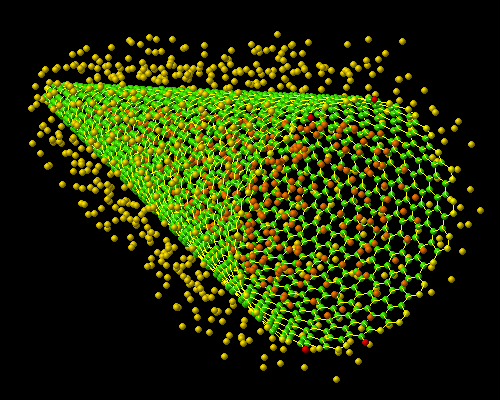Fabrication and replication of carbon nanotubes by (plasma discharge) method of nano and microelectronics
Researcher and author: Dr. ( Afshin Rashid)
Note: This method of amplification passes a large current through two carbon electrodes in the space containing the plasma material, which leads to a spark in the gap between the two electrodes.
In this case, more than 30% of the ash produced is carbon nanotubes. A new method for the chemical modification of carbon nanotubes, which involves the radio frequency activation of plasma luminosity, followed by the characteristic chemical reactions of the functional groups produced by the plasma, is carbon nanotubes. For example, graphene chains on electron-guided carbon nanotubes react with plasma and are immobilized by forming base Schiff bonds, which are stabilized by reduction with carbon nanotube particles. Using the same reaction, we also bonded oxidized graphene chains with pre-labeled bonded chemical dispersions on reacted carbon nanotubes with CNT carbon nanotubes. In this method, plasma amplification of metal nanotubes and nanoelectronic conductors Graphene labeling allows the surface immobilization reaction to be performed simply by measuring light radiation. Conductive single-layer (CNT) carbon nanotubes are bonded.
There are strong bonds between the atoms of the nanotubes that make them highly resistant to the effects of tensile forces . An example of the force required to break a carbon nanotube is many times the force required to break a piece of steel the thickness of a nanotube. In nanotubes, in addition to creating high strength, interatomic bonds make them easy to form and even twist . While steel is only resistant to tensile forces and does not have the necessary flexibility against torsion. Due to the good strength and ductility of nanotubes, they are used in composites with metal, polymer and ceramic substrates as (filaments).
Conclusion:
CNT carbon nanotubes have a fullerene-like structure that can be closed at the end . The name of these nanostructures is derived from their physical shape, in which graphene tubular sheets with different tubing angles lead to tubes with different symmetries. The angle of tubing and the radius of the tube determine the occurrence of metal or semiconductor properties in these nanostructures.
Researcher and author: Dr. ( Afshin Rashid)
PhD in Nano-Microelectronics




